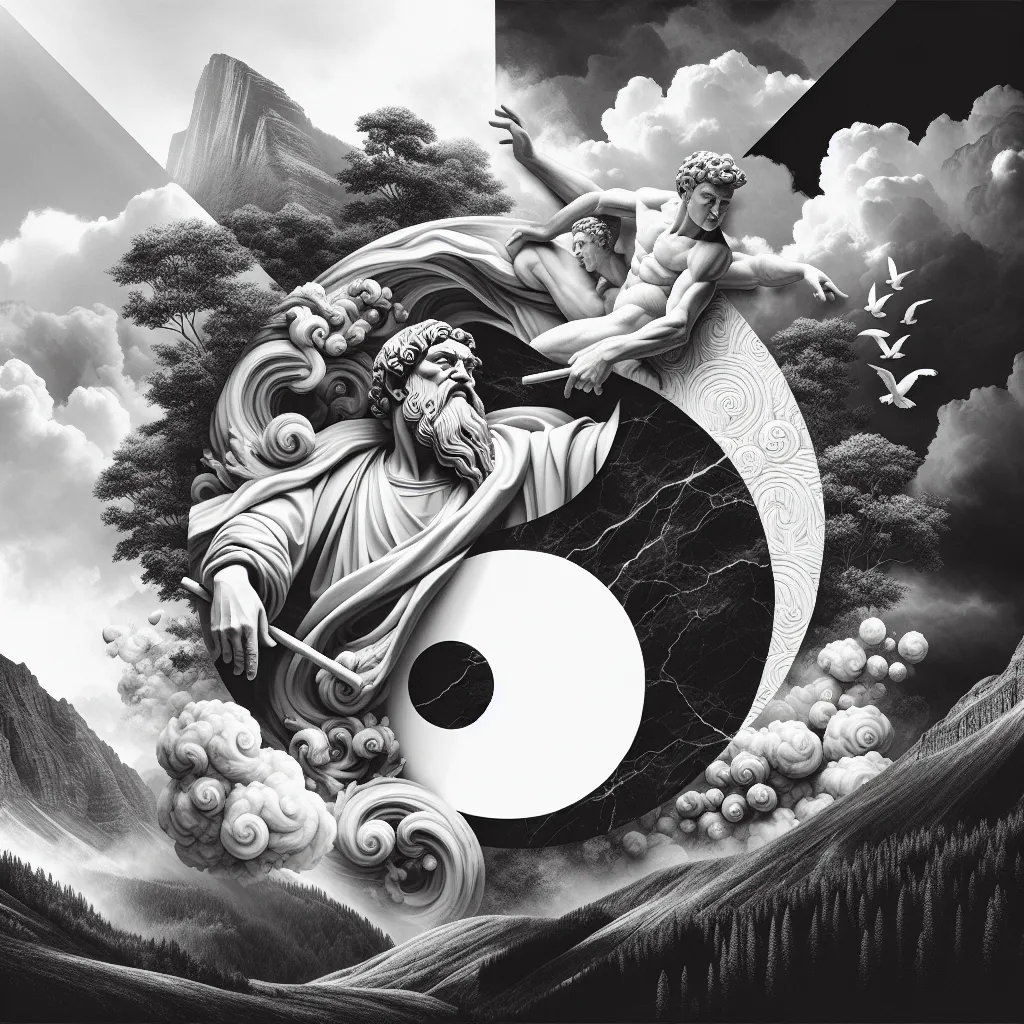
- Published on
- Authors

- Name
- You
The Tao Te Ching: Laozi’s Guide to the Way of Life
Introduction
The Tao Te Ching is an ancient Chinese text penned by the sage Laozi. It constitutes the foundation of Taoism, a spiritual and philosophical tradition that emphasizes living in harmony with the Tao (the Way). This article explores the profound teachings of the Tao Te Ching, its relevance in both ancient and modern contexts, and the unique blend of advanced science and mystical wisdom it presents.
Historical Background
The Origins of Laozi
Laozi, also known as Lao Tzu or Lao-Tze, is believed to have lived during the 6th century BCE. His life remains shrouded in mystery, with historical accounts often intertwining with myth. According to tradition, Laozi served as a keeper of the archives at the royal court of the Zhou Dynasty. Disenchanted with the moral decay of society, he ventured westward on a water buffalo, leaving the Tao Te Ching as his legacy to civilization.
The Text's Structure
The Tao Te Ching is divided into 81 short chapters, each offering a succinct yet profound nugget of wisdom. The text is traditionally split into two parts:
- Tao (The Way): Chapters 1–37
- Te (Virtue): Chapters 38–81
Core Teachings of the Tao Te Ching
The Concept of Tao
The central tenet of the Tao Te Ching is the Tao, often translated as the Way. The Tao is an ineffable force that underlies and unifies the universe. It is both the source and the principle of all that exists. Laozi describes the Tao as eternal, unchanging, and beyond human comprehension:
"The Tao that can be told is not the eternal Tao;
The name that can be named is not the eternal name."
— Tao Te Ching, Chapter 1
Wu Wei (Non-Action)
A cornerstone of Laozi's philosophy is Wu Wei, often translated as "non-action" or "effortless action." This principle advocates aligning oneself with the natural flow of life rather than striving forcefully against it. According to Laozi, this approach fosters peace, harmony, and success:
"Practice not-doing, and everything will fall into place."
— Tao Te Ching, Chapter 3
Yin and Yang
The Tao Te Ching illustrates the dynamic interplay between Yin (passive, receptive) and Yang (active, creative) energies. Laozi emphasizes the importance of balance and harmony between these complementary forces:
| Yin | Yang |
|---|---|
| Darkness | Light |
| Femininity | Masculinity |
| Stillness | Movement |
| Cold | Heat |
"Know the male, yet keep to the female:
Receive the world in your arms."
— Tao Te Ching, Chapter 28
The Tao Te Ching in Modern Context
Science and Taoism
Advances in modern science have elucidated various phenomena that resonate with Taoist principles. For instance, the concept of Wu Wei aligns with the principles of flow in positive psychology, where optimal experiences occur when individuals are fully immersed in activities that match their skills with challenges.
Additionally, the interconnectedness emphasized in Taoism echoes the holistic perspectives found in systems theory and quantum physics, where entities are seen as part of an intricate web of relationships rather than isolated components.
Practical Applications
| Context | Application |
|---|---|
| Leadership | Adopt servant leadership, guiding without imposing will. |
| Personal Growth | Embrace mindfulness and present-moment awareness. |
| Environmentalism | Live sustainably, considering the long-term impact of actions. |
Conclusion
The Tao Te Ching offers timeless wisdom that transcends cultural and temporal boundaries. Its teachings on humility, simplicity, and harmony with the natural order provide invaluable guidance for contemporary life. By integrating the mystical wisdom of Laozi with modern scientific insights, we can embrace a balanced, fulfilling, and harmonious existence.
The relevance of the Tao Te Ching today is a testament to Laozi’s profound understanding of the human condition and the eternal nature of the Tao.
"The sage does not hoard.
The more he helps others, the more he benefits himself,
The more he gives to others, the more he gets himself."
— Tao Te Ching, Chapter 81
